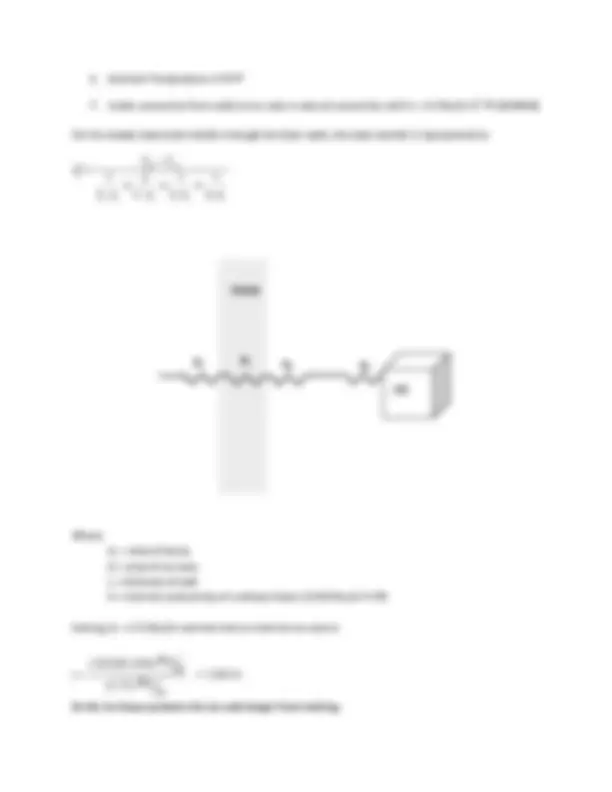




Study with the several resources on Docsity

Earn points by helping other students or get them with a premium plan


Prepare for your exams
Study with the several resources on Docsity

Earn points to download
Earn points by helping other students or get them with a premium plan
Community
Ask the community for help and clear up your study doubts
Discover the best universities in your country according to Docsity users
Free resources
Download our free guides on studying techniques, anxiety management strategies, and thesis advice from Docsity tutors
A comparison between an ice house with ice walls and a house with rigid foam walls in terms of their ability to keep an ice cube frozen longer. The analysis is based on the given dimensions, convective coefficients, and thermal conductivity of urethane foam. The document also includes calculations for the time required to melt the ice in the walls and the ice cube under each condition.
Typology: Assignments
1 / 4

This page cannot be seen from the preview
Don't miss anything!



Consider a small house (enclosure), 8” to the side, which contains an ice cube (1” to the side) at its center. Wind blows by the house with outside convective coefficient ho = 6.0 Btu/hr ft^2 F; the inside convective coefficient hi = 1.5 Btu/hr ft^2 F. The ground upon which the house rests is a perfect insulator, so heat is transferred through the four walls and roof. The walls of the house are 1” thick. Which wall materials will keep the ice cube frozen longer, ice or rigid foam (k = 0.015 Btu hr ft F)?
Model of Ice House:
Assumptions:
Ground
Ice Cube at 32F
Enclosure
Wind at 70F
Convective heat transfer from room to ice house is calculated as
h = 6.0 Btu/hr ft^2 ºF (ASHRAE)
A =5 * (8” * 8”)/144 = 2.22 ft^2
Q = (6.0) * (2.22) * (70 – 32) = 507 Btu/hr
Energy needed to melt ice is mass of ice times latent heat of fusion:
E = mice * hfs
mice = 5 * (8” * 8” * 1”)/( 1728 ) in^3 /ft^3 * 56 lb/ft^3 = 10.4 lb
Time to melt ice in walls of house is
Time to melt ice cube is a similar calculation, except mass of ice cube is only 0.032 lb and heat transfer rate is 7.92 Btu/hr because surface area is smaller. Result is 0.58 hr. Total time is sum of 2.95 and 0.58, or 3.53 hr.
Model of House with Foam Walls:
Assumptions:
Comments on Solution: